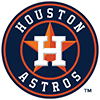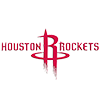As the season closes, it is time to review some trends from the year. This week, we will focus on offensive observations.
Increasing scores
As many have noted, the NBA is in the midst of a scoring bonanza. But there is more to see here than simply stating, "the scores are increasing." First, these scores are increasing at a pace unprecedented in recent NBA history. Entering this weekend, with 52 games (104 team-games) remaining in the regular season, 2016-17 has almost clinched the most points in the post-strike era (2011-12). For context, the biggest year-to-year change in that time was roughly 8,000 points – the increase this season is on pace to pass that.
Those totals are based on the production of an entire team, but they make a giant impact on the fantasy landscape. The top scorers make up an almost fixed portion of the league's total scoring, so as total points increase, so too will fantasy points. In each of the last four years, the top-25 scorers accounted for 15 to 16 percent of the league's total points, and the top-50 scorers accounted for 26 to 28 percent. Over the span of this inquiry, every single top-50 per-game scorer has been a player owned in almost all fantasy leagues for basically the entire season – that is to say, when these players were healthy, they were almost certainly in fantasy lineups.
Let's take a moment to walk through the impact this shift is having on fantasy teams.
Five
As the season closes, it is time to review some trends from the year. This week, we will focus on offensive observations.
Increasing scores
As many have noted, the NBA is in the midst of a scoring bonanza. But there is more to see here than simply stating, "the scores are increasing." First, these scores are increasing at a pace unprecedented in recent NBA history. Entering this weekend, with 52 games (104 team-games) remaining in the regular season, 2016-17 has almost clinched the most points in the post-strike era (2011-12). For context, the biggest year-to-year change in that time was roughly 8,000 points – the increase this season is on pace to pass that.
Those totals are based on the production of an entire team, but they make a giant impact on the fantasy landscape. The top scorers make up an almost fixed portion of the league's total scoring, so as total points increase, so too will fantasy points. In each of the last four years, the top-25 scorers accounted for 15 to 16 percent of the league's total points, and the top-50 scorers accounted for 26 to 28 percent. Over the span of this inquiry, every single top-50 per-game scorer has been a player owned in almost all fantasy leagues for basically the entire season – that is to say, when these players were healthy, they were almost certainly in fantasy lineups.
Let's take a moment to walk through the impact this shift is having on fantasy teams.
Five years ago, the average top-25 scorer averaged 21.0 points, while players 26th to 50th averaged 16.8. This season, those averages are up to 25.1 and 19.0 points per game, respectively. In standard 12-team leagues, each team theoretically has two players in each bracket. Each team plays about 3.8 games per week, which approximates to about 15 games each week among the top four scorers.
Mathing all those together, the average fantasy team is scoring an extra 48 points every single week from its top-four players alone! Depending on settings, that can mean as much as a 10 percent increase in points scored in a head-to-head matchup – and again, that ignores the increased scoring taking place on the bottom half of a roster.
What does this mean? The most important piece here may relate to projections for next season. The speed of increased scoring is unprecedented in recent times, which means that the historical data is a less-helpful guide than it has been in past seasons. As a result, scoring projections for players next year may be even worse than they usually are. As I found a few weeks ago, players' per-possession scoring from one situation to another varies significantly, making scoring projections even less accurate.
Increasing Three-Pointers – Who Loses?
Similarly, there is nothing new in pointing out the rise in three-point shooting, but there are fantasy implications worth pursuing.
The number of threes made and attempted has increased in each of the last five seasons. As with scoring, the jump from 2015-16 is more than double the difference between any two previous seasons. Teams are shooting more threes, but this is a strategic decision and not due to any change in ability. Three-point efficiency is basically unchanged year to year in the post-strike era – all five seasons are within a single percentage point of one another, grouped around 35.4 percent.
The consistency of the league-wide three-point percentage is occurring despite shifting offensive tactics, including increased awareness of the value of corner threes. This implies there is a limit on three-point efficiency (it's probably not a hard cap, but the curve may resemble a function approaching an asymptote, which are words that might mean something to a few readers). Some combination of the variables – being a human, shooting a basketball, from 20-plus feet away, while freakishly sized other humans are running at you or waving their arms in your face, with thousands or millions of people watching – make three-pointers predictably difficult on a league-wide basis.
What does this mean? In terms of future fantasy teams, this is probably most important for big men. More big men are incorporating three-point shooting into their games, and as they do, they will instantly switch from helpful to harmful in field-goal percentage.
That might be controversial, so I'll go into a bit more depth. This season, five centers attempted at least two three-pointers per game more than they had last season. Three of the five, Brook Lopez, Marc Gasol and Karl-Anthony Towns, posted career-lows for field-goal percentage. Four of the five (excluding Towns) came in with a field-goal percentage less than 47.5. That 47.5 percent mark is important, since it is approximately the number a fantasy team needs to hit to be good in a 10-team league.
Two other notable players are Anthony Davis and Nikola Vucevic. Davis was one year ahead of the trend. After attempting only 27 threes during his first three seasons, he averaged 1.8 attempts per game in both 2015-16 and 2016-17. His field-goal percentage these last two seasons are below the marks set in his first three seasons.
Vucevic, similarly, attempted just 26 threes over his first five seasons, before averaging 1.0 per game this season. His field-goal percentage is his lowest since his rookie season. Every center adding threes to his game has seen his field-goal percentage drop. Out of all of them, the only ones to maintain a helpful field-goal figure are Towns and Davis – two first overall draft picks on track to be generational superstars.
Increasing Three-Pointers – Who Wins?
The increasing reliance on threes has fueled a lot of the growth in scoring, but not all of it. 2016-17 is on pace score 5,450 more points off threes than 2015-16. That amounts to a little more than 70 percent of the overall scoring increase between the two years.
Three-point production has gone up every season since the strike, and in the years that overall scoring increased, threes always accounted for significantly more than half the growth. Scoring is going up, and most, but not all, of the boost is coming from threes.
That is looking at year-to-year change. Over the entire five-year span, 83 percent of the increase in scoring comes from three-pointers. In 2012-13, 29 of the top-50 scorers averaged at least one three per game, and 10 averaged at least two. This season, 42 of the top-50 scorers average a three per game, and 18 average at least two. Only three players in the top 50 average less than half a three per game – up from 18 players who avoided the arc in 2012-13.
As the league shifts toward more outside shooting, the makeup of the top 50 changes. In 2012-13, there were 15 to 17 centers in the top 50 (did David West count as a center?). Now we are down to 11 centers on the scoring leaderboard, and most have incorporated some long-range shooting into their games. More players are making more threes, driving their scoring totals ahead of traditional bigs who still rely on their work in the paint.
What does this mean? This shift should change how managers approach the points category. Big men who can be a top-50 scorer, whether or not they shoot threes, are becoming more valuable because they are becoming more rare. Meanwhile, mid- and late-round guards and wings who are in position to attempt more threes can also be targeted. Most of the increased scoring is coming from players who make threes scoring more – the players who don't shoot threes are, generally speaking, scoring similar to what they have in the past.




























